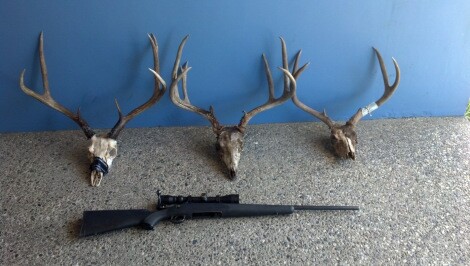Amador County Man Racks Up Fines, Probation on Deer Poaching Charges

A 24-year-old resident of the Sierra Nevada foothills was sentenced to probation and thousands of dollars in fines after being convicted on trophy deer poaching charges this week. Gary Michael Creason Jr., a resident of the Amador County town of Plymouth, admitted to law enforcement in 2013 that he'd hunted deer out of season, including hunting trophy deer during the mating season.
Creason, who also admitted to illegally using another person's deer tag, was fined $19,520 and sentenced to three years' probation, during which time all his hunting privileges will be suspended. He also had to turn in his deer body parts.
Trophy deer are male deer with huge racks of antlers, which can fetch a substantial price on the wildlife parts black market. Law enforcement staff from the California Department of Fish and Wildlife say that poachers often illegally target trophy deer during the mating season, partly because their antlers tend to be in top condition and partly because distractable male deer with loving on their minds are easier targets.
"Poaching deer during the mating season when hunting season is closed is a common tactic of poachers," said CDFW's Stacey LaFave. "Bucks have a reduced awareness of their surroundings and become very susceptible to this type of illegal activity."
A law signed by Governor Jerry Brown in 2012 increased penalties for offenses like those for which Creason was convicted. AB 1162, which was backed by hunting organizations, establishes fines of up to $40,000 and prison sentences of up to a year for illegal hunting of trophy deer.


